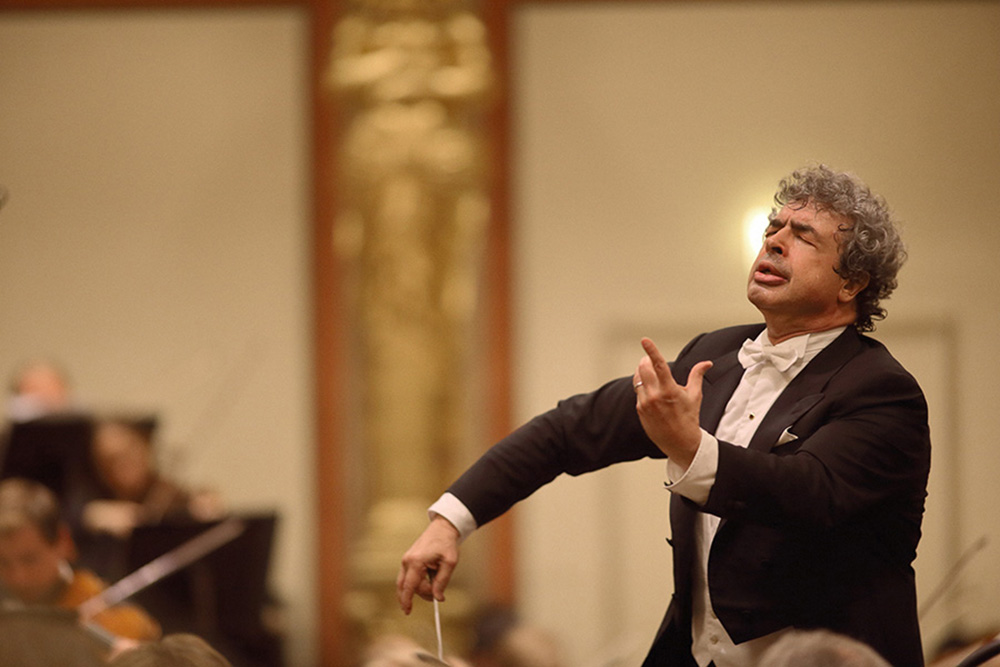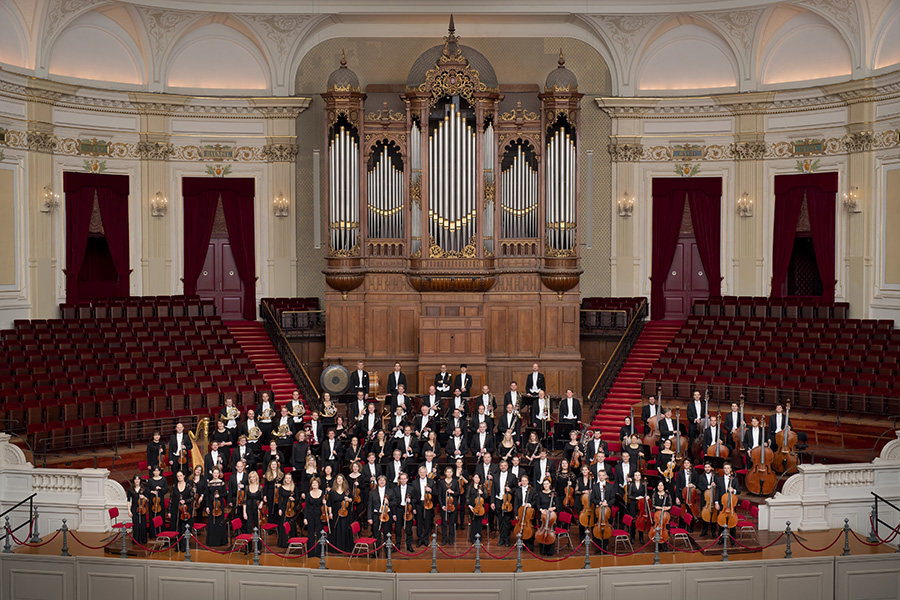Ever-popular conductor Semyon Bychkov returns to the Concertgebouw Orchestra for a programme of music which includes Dvořák’s Carnival Overture, the Shostakovich First Violin Concerto and Rachmaninoff’s Symphonic Dances. The guest artist is the inspirational Norwegian violinist Vilde Frang.
Semyon Bychkov has a particular love for Russian music – hardly surprising since he was born in St Petersburg. He subsequently emigrated to the US and now lives in Europe, where he is Chief Conductor & Music Director of the Czech Philharmonic. He also holds the Otto Klemperer Chair of Conducting at the Royal Academy of Music and the Günter Wand Conducting Chair at the BBC Symphony Orchestra.
Maestro Bychkov has long-standing and successful relationships with many of the major orchestras and opera houses of the world, as well as with the Concertgebouw, having made his debut with the Orchestra in 1984, and been a regular guest since then. An outspoken supporter of Ukraine, he was one of the first musicians to express his position on the outbreak of the war in that country, and has since spoken in support of Ukraine in Prague’s Wenceslas Square, and on radio and television in the Czech Republic, France, Germany, Austria, the UK and the USA.
Vilde Frang, said by The Strad to possess “Startling emotional sincerity and inspired musical imagination”, plays the Shostakovich Violin Concerto No 1. Making a return visit to the Concertgebouw, she has also appeared at venues including London’s Wigmore and Royal Albert halls, the Tonhalle in Zurich, the Rudolfinum in Prague and Moscow’s Tchaikovsky Hall. She regularly appears at festivals such as Salzburg, Verbier, Lucerne and the London Proms, and since 2020 she has been a member of the artistic board of the Oslo Chamber Music Festival.
Highlights among Ms Frang’s recent and forthcoming engagements include performances with Berlin Philharmonic, London Symphony, Gewandhausorchester Leipzig, Budapest Festival Orchestra, Orchestre de Paris and Santa Cecilia Orchestra in Europe, as well as the St Petersburg Philharmonic and ensembles in the US such as the Los Angeles Philharmonic and Cleveland Orchestra.
Dmitry Shostakovich started working on his challenging and dramatic First Violin Concerto in early 1948 – a time during which he was being denounced by the Soviet authorities for his perceived ‘counter revolutionary’ sympathies. His great friend and contemporary, violinist David Oistrakh, was doubtless the inspiration for this concerto, and even though Oistrakh played it privately and apparently made a recording of it at home, Shostakovich decided that it was too risky to publish the work, so he hid it in a desk drawer for seven years.
It wasn’t until 1955 – two years after the death of Stalin – that Oistrakh premiered the work, with Yevgeny Mravinsky leading the Leningrad Philharmonic Orchestra, at Leningrad Philharmonic Hall, on 29th October of that year. The composer couldn’t, however, resist making a point – he very deliberately made sure that the date on which the work had been composed was made public.
Sergei Rachmaninoff, the last great figure of Russian Romanticism, was regarded as the leading piano virtuoso of his day. He finally left Russia after the 1917 Revolution – the second of his self-imposed exiles – and he ultimately settled in the United States. He missed his homeland, though, and the Russian people, and spent most of his time performing, not composing.
The Symphonic Dances, written in 1940 – roughly two years before his death – was the last work that he wrote, and the only one which was composed in its entirety in the United States. In it, he looks back at his career, quoting excerpts from his past compositions, and hoped that the Symphonic Dances would eventually become a ballet, which it ultimately did, although not until 40 years after Rachmaninoff’s death. The work – which was written for and dedicated to Eugene Ormandy – was premiered by the Philadelphia Orchestra on 3rd January, 1941.
The programme opens with the Carnival Overture by Antonín Dvořák – one of his liveliest and popular short works for orchestra – which celebrates the human capacity for life and joy. Initially part of a trilogy entitled Nature, Life and Love, this triptych was ultimately published as three separate works under the titles In Nature’s Realm, Carnival and Othello. The original work was premiered by the Orchestra of the National Theatre in the Rudolfinum, Prague, under the baton of the composer, on 28th April, 1892.
Semyon Bychkov leads Vilde Frang and the Concertgebouw Orchestra in works by Dvořák, Shostakovich and Rachmaninoff at Amsterdam’s Concertgebouw on 16th and 17th May. Further information and details of ticketing are available on the Concertgebouw website.
Information sourced from:
Concertgebouw programme notes
Artists’ websites
Shostakovich Violin Concerto No 1
Rachmaninoff Symphonic Dances
Dvořák Carnival Overture


